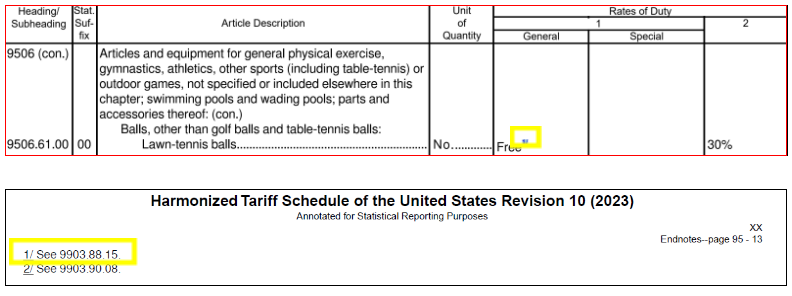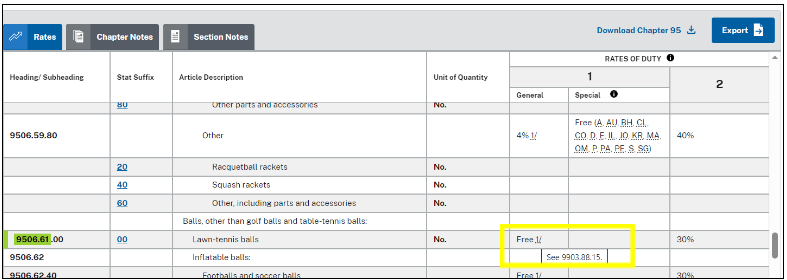Endnotes and footnotes are there for ease of reference—included to assist you in referencing other applicable areas of the HTS for your goods.
Endnotes are found in chapters 01 – 97 and are in the Stat Suffix, Article Description, Unit of Quantity, or Rates of Duty columns. Each endnote, regardless of location, refers you to another part of the HTS where additional information for your goods can be found. Footnotes found in chapters 98 - 99 and the general notes are merely informational. Their presence or absence has no legal effect, and the language contained in footnotes has no effect on the legal text or its interpretation. Compiler’s notes are also added to provide information to users of the HTS, especially where provisions have expired or may not have been updated.
Endnotes in the Stat Suffix column refer you to guidance for not only your original HTS classification number, but any other supplemental or additional HTS number(s).
Endnotes in the Article Description column (regardless of whether they are at the legal or statistical level) refer you to information indicating whether or not your product qualifies for an exclusion from additional duties.
Endnotes in the Unit of Quantity column refer you to additional guidance on reporting units of quantity.
Endnotes in the Rates of Duty columns refer you to additional rates of duty for your product.
When viewing the HTS code in PDF form, click on the endnote to go to the end of the chapter. Using the example below for lawn tennis balls, endnote “1/” links you to “See 9903.88.15.”

When viewing the HTS code using the HTS search tool, placing your cursor over the endnote shows the additional reference for your searched item.

